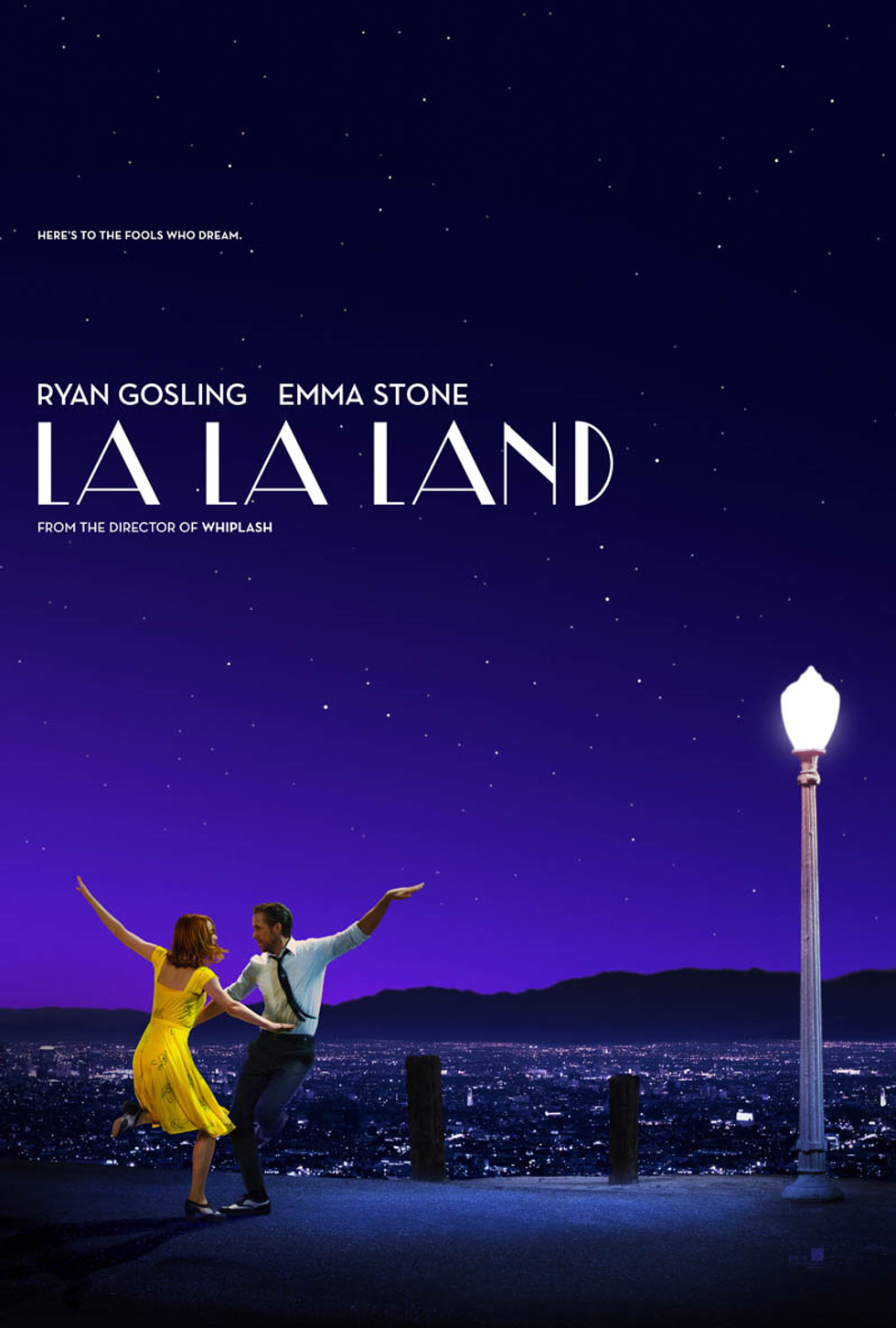Directed Damien Chazelle and starring Ryan Gosling alongside Emma Stone, La La Land takes us back in time without ever leaving our time at all. It is charming beyond belief, whymsical, authentically funny, as well as mournful and celebratory all at once. A visual and auditive treat, La La Land is a love story in present time sparkling with the past of the glory days. A modern musical-movie bearing an unmistakable likeness to the classics.
As I walked to the theater the friend I was meeting texted me, “Everyone walking in is at least 50 or above???” I thought it was a little odd until the movie started. La La Land is set in modern day L.A. but is designed with elements of the glittering “Old Hollywood” days. The movie opens with the largest number of the film, sang by a cast of drivers stuck in infamous L.A. traffic. Funnily enough, Damien Chazelle, the director, said he did this on purpose as to weed out anyone in the crowd who wasn’t down for a huge classic theatrical music number… that way the rest of us could settle in for some fun. The movie is centered around the love story of two starving artists, one an actress the other a jazz pianist. Don’t worry though I won’t spoil it for you.
We see much of the meaning of the movie itself tangled up in the struggles of Ryan Gosling’s character, Sebastian. In this era jazz is no longer the underlying hum of city streets or speakeasies (probably because we don’t have speakeasies anymore) but is instead, as Emma Stone’s character remarks, “elevator music.” The disenfranchisement of jazz music is what leaves Sebastian failing to find work in a dying industry… Sounding at all familiar?
In a greater sense, this movie showcases the beauty of the dying industries of the world. The film is scattered with posters of the great old jazz and Hollywood legends, even their cars tell the same narrative of old vs new clashing. She drives a Prius; he drives a 1982 Buick Riviera. The entire film is designed in this way. The time is now but the memories of the film itself are old. When wording on the screen appears, something such as “winter” or “summer,” the font is big, standout, and showy. It’s called “Yasashii Regular” and looks something like this:
Very retro. Much like the film itself. As I mentioned the movie is very self aware. At several points the paradox of preserving the classics while living in the now is Sebastian’s major internal battle. In this way, audiences are brought to a state of reminiscence and possibly longing for the traditional. For the time when the authenticity in jazz music was the current of how our society worked. Raw and unadulterated by money or things to come. At the same time though the film is undoubtedly a colorful celebration of all these things. The musical numbers are bouncy and full of character. There is even a tap number!
La La Land brings back to cinema what has been missing for far too long: the authenticity of storytelling. The passion and color of the film really did reach out to each of the audience members. It’s been awhile since I was in a theater where people really laughed out loud at the jokes made on screen or clapped at the end. But this movie begs that kind of audience interaction with it. We get used to sitting and watching a movie and zoning out. We stare without being immersed. But the fun and genuine nature of this musical brought back the showmanship of cinema that incites emotional reaction rather than a blank stare. La La Land is a fun, theatrical and surprising delight. Seeing it is kind of like going out on a date with that guy that opens all your doors and takes your coat and brings you flowers. He’s a lovely and refreshing reminder that chivalry, or in this case classic romanticism and showmanship, isn’t dead at all… it’s just a little “old fashioned.”




















